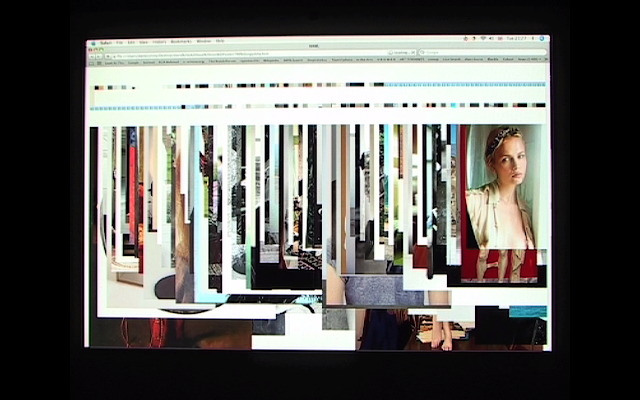Saturday, 1 March 2014
Sunday, 2 February 2014
Tuesday, 26 November 2013
I DID, DID I - Curated by Kes Richardson and Darren O'Brien
Posted by
Tim Dixon
Labels:
ASC Gallery,
Catherine Parsonage and Kes Richardson,
Curating,
Dominic Kennedy,
Howard Dyke,
Kate Groobey,
Memory,
Painting,
Repetition
Wednesday, 13 November 2013
Thursday, 31 October 2013
Saturday, 19 October 2013
Friday, 18 October 2013
Thursday, 17 October 2013
Friday, 4 October 2013
Christian Marclay - The Clock
Posted by
Tim Dixon
Labels:
Appropriation,
Christian Marclay,
Cinema,
Cyclical,
Elliptical,
Hollywood,
Time,
Video
Friday, 27 September 2013
Wednesday, 11 September 2013
Sunday, 1 September 2013
Friday, 23 August 2013
Sean Edwards - Portrait (for a screenplay) of Beth Harmon
Posted by
Tim Dixon
Labels:
Avatar,
Chess,
Curating,
film,
Limoncello,
Richard Bevan,
Sara Mackillop,
Sculpture,
Sean Edwards
Sunday, 18 August 2013
Wednesday, 14 August 2013
Friday, 12 July 2013
Tuesday, 18 June 2013
Monday, 3 June 2013
Monday, 27 May 2013
Monday, 6 May 2013
Monday, 25 March 2013
Sunday, 17 March 2013
Ryan Gander - I took my hands off your eyes too soon
Ryan Gander - I took my hands off your eyes too soon, 2007
'Kiev MC Arsat PCS 4.5/55 mm Shift Lens, Focal Length: 55mm, Aperture scale: 4.5 to 22, Focusing Scale: 0.3 m (0.98 ft) to infinity, Minimum Focusing distance: 1.2 feet (0.5 Meters), Field of view" 69 degrees (with shift) 84 degrees (with shift), Number of Elements: Nine elements in seven groups, Filter size: 72 mm, Weight: 2 lbs, Serial Number 0051, Douglas M. Parker Studio, Glendale, California, January 27, 2007.'
Tuesday, 5 March 2013
Michel Foucault - The Four Similitudes
Michel Foucault, The Four Similitudes
Excerpt from The Order of Things
Chapter 2: The Prose of The World
Foucault's essay examines the role that resemblances of different kinds played in the foundations of enlightenment science.
Full text here: http://www9.georgetown.edu/faculty/irvinem/theory/foucault-order_of_things-text.html
Chapter 2, Part 1: The Four Similitudes
Up to the end of the sixteenth century,
resemblance played a constructive role in the knowledge of Western culture. It
was resemblance that largely guided exegesis and the interpretation of texts;
it was resemblance that organized the play of symbols, made possible knowledge
of things visible and invisible, and controlled the art of representing them.
The universe was folded in upon itself: the earth echoing the sky, faces seeing
themselves reflected in the stars, and plants holding within their stems the
secrets that were of use to man. Painting imitated space. And representation -
whether in the service of pleasure or of knowledge - was posited as a form of
repetition: the theatre of life or the mirror of nature, that was the claim
made by all language, its manner of declaring its existence and of formulating
its right of speech.
We must pause here for a while, at this moment in
time when resemblance was about to relinquish its relation with knowledge and
disappear, in part at least, from the sphere of cognition. How, at the end of
the sixteenth century, and even in the early seventeenth century, was similitude
conceived? How did it organize the figures of knowledge? And if the things that
resembled one another were indeed infinite in number, can one, at least,
establish the forms according to which they might resemble one another?
The semantic web of resemblance in the sixteenth
century is extremely rich: Amicitia, Aequalitas (contractus, consensus,
matrimonium, societas, pax, et similia), Consonantia, Concertus, Continuum,
Pantos, Proportio, Similitudo, Conjunctio, Copula[1]. And there are a great
many other notions that intersect, overlap, reinforce, or limit one another on
the surface of thought. It is enough for the moment to indicate the principal
figures that determine the knowledge of resemblance with their articulations.
There are four of these that are, beyond doubt, essential.
Thursday, 21 February 2013
Thursday, 7 February 2013
Sunday, 3 February 2013
Thursday, 24 January 2013
Monday, 31 December 2012
Monday, 10 December 2012
Tuesday, 4 December 2012
Subscribe to:
Posts (Atom)


























